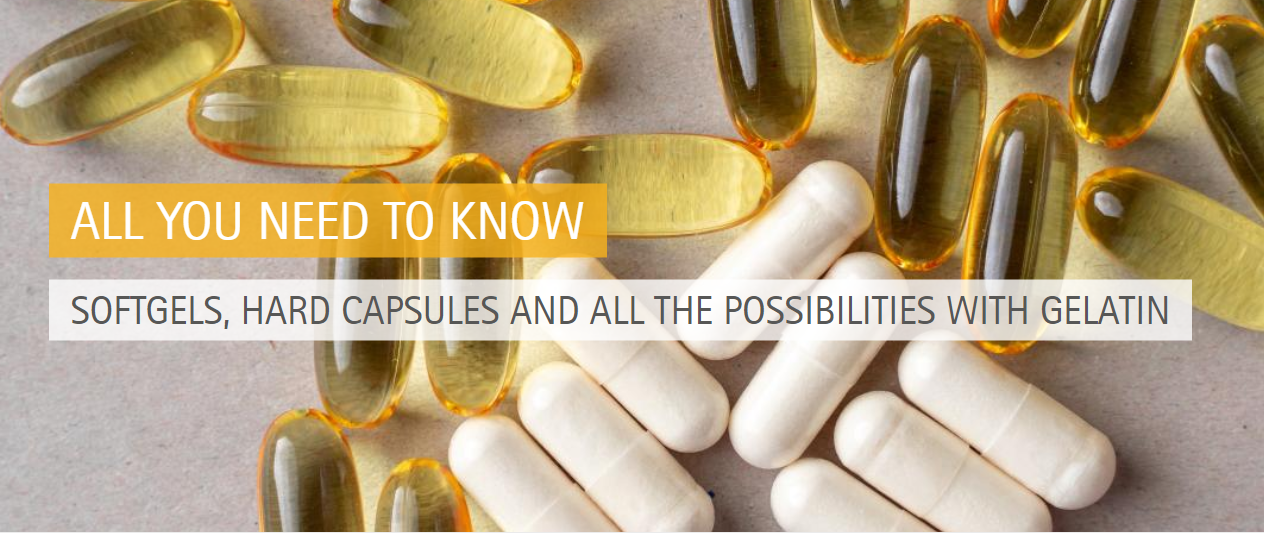Did you know? Fifteen fascinating facts about soft capsules
December
18, 2020
18, 2020
4 min
Because they’re easy to use and swallow, soft capsules are one of the most popular dosage forms for a wide range of healthcare products. As such, many of us have taken “softcaps” at some time, whether it was a pharmaceutical or nutraceutical applications. By nature, we at GELITA are experts of this delivery format and know it from the inside out. So, we’ve put together 15 facts about soft capsules that we think are worth sharing. Did you know the following?
- The soft capsule manufacturing process was invented by Robert Pauli Scherer — one of GELITA’s predecessors — in the late 1920s.
- Traditionally, soft capsules are made with gelatin...
- … but it’s also possible to produce them with vegetarian alternatives, such as carrageenan (red seaweed), modified starch (such as potato, corn or cassava) or alginates (brown seaweed).
- There are a few technological differences between soft capsules made of gelatin and the vegetarian alternatives. For example, gelatin capsules provide a stronger oxygen barrier than vegetarian ones. See our blogpost on the matter.
- Soft capsules are hermetically sealed and, as such, protect sensitive fills from atmospheric oxygen, light, moisture, dust and other environmental influences.
- They are the preferred dosage form for liquid, paste-like or oil-based fills — such as omega-3 fish oils — because any potentially unpleasant odors can be kept inside the shell.
- In general, gelatin soft capsules release their contents within 5–15 minutes.
- Certain types of reactive fills as well as extremely hot or humid storage conditions can cause crosslinking of “standard” gelatin in the capsule shell. This leads to the capsule becoming less soluble with time, resulting in longer dissolution and fill release profiles.
- But, not to worry: with our GELITA® RXL (reduced crosslinking) portfolio, we’ve already found a solution for this problem. These gelatins provide reliable release and reduced crosslinking properties, even under extreme storage conditions. The unique Release Profile Portfolio from GELITA enables soft capsule manufacturers to define the timing of the fill release as well as where in the body the capsule should open. Do you want to know more?
-
In general, medium Bloom gelatin (115–200 g Bloom) is used for the production of soft gelatin capsules. Bloom is the test that determines the gel strength of gelatins.
- The higher the Bloom value, the higher the melting and gelling temperature of a gel … and the shorter its gelling times. We offer an extensive range of versatile and tailor-made gelatins that are all suitable for a vast range of soft capsule applications and work well in most environments.
- For the production of soft gelatin shells, natural plasticizers (e. g. glycerol or sorbitol) are used, to reduce the interaction between protein molecules and improve the gelatin’s ability to retain moisture.
- Some religions may not allow the consumption of traditional gelatin, but we also provide Halal and Kosher gelatin variants that can also be used for pharmaceutical applications.
- Manufacturing soft gels is relatively costly compared with other dosage form. Importantly, though, gelatin capsules are still cheaper to produce than vegetarian ones, which require higher processing temperatures and longer drying times that result in greater energy use and increased manufacturing costs.
- Additionally, the pharmaceutical gelatin GELITA® EC allows for the one-step-production of enteric capsules that open in the intestine, instead of the stomach, like traditional gelatin capsules. A coating is not necessary, here.
Category: #AmazingGelatin
















